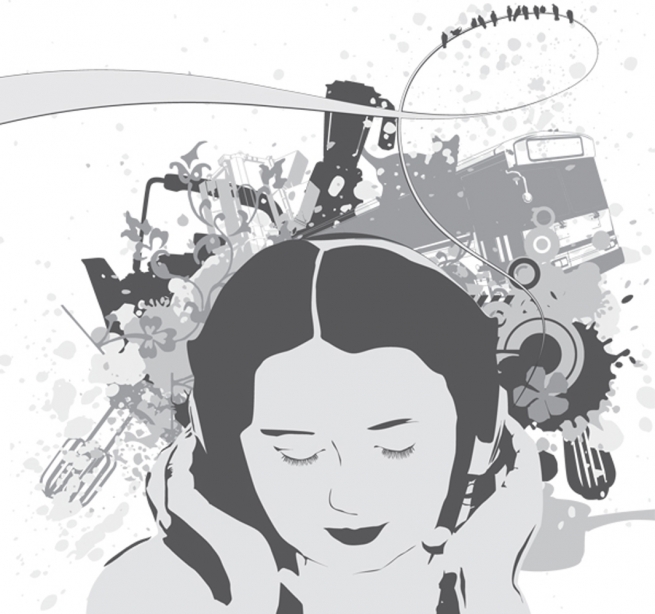
Imagine you are walking down a crowded street, or say, sitting on public transit, or maybe even waiting in a public place for an appointment. Now close your eyes. What do you hear? Chances are, you will hear, bleeding through the ambient background noise in this imagined scenario, a distinctive tell-tale sound—the high frequency, narrow band-pass sound of tinny music bleeding out from someone’s headphones. It’s a scene that is repeated in public the world over: you encounter a person—young, old, male, female, of any ethnicity—wearing headphones and plugged into their own personal soundtracks.
Personal tastes and public etiquette aside, wearing headphones in order to tailor one’s sound environment speaks volumes about the power of sound. While the act of tuning out one’s immediate surroundings is often decried as emblematic of a range of social ills, this reaction is reminiscent of the Puritan’s distaste for the reading of fiction.
It seems like a given now, but Cage’s seminal trip into an anechoic chamber in 1951 and the subsequent composition and performance of 433”—a piece of music which proposed to a Western listening public that music could contain unpredictable and unintentional sounds—was, at the time, anarchic. The audience reacted angrily and found the piece offensive. The imposition of Cage’s experience of music on the classical audience of the time is not unlike loud headphones being overheard in public today. Both situations have a proponent with a distinct experience of sound and both have recipients who may not share such a perspective. The action (call) and reaction (response) around these aesthetic collisions illustrate the distinct and personal ways in which each of us uses music.
I believe in sound as escape: not Muzak’s version of controlling the marketplace through sound, but music as a mood-altering substance, sound as a portal to deeper consciousness, and silence as a sonically filled meditative space. It is imperative that we, as listeners and performers, remain engaged with the potential of sound, that we recommit to what brought us to sound originally, and to nurture that relationship, whether it is wonder at Xenakis’ application of stochastic processes in composition, the transportative nature of Hildegard Westerkamp’s soundscapes, or the miraculous joy of the microsonic in the music of Carsten Nicolai. The point is, we can choose our desired experience. Do we want to cognitively engage? Do we want to physically immerse? Or do we want to spiritually escape? Sound offers all.
The musicians featured in this issue have all embraced music as a tool of escape in their own unique ways. Richard Windeyer’s work with the interdisciplinary group Bluemouth Inc. uses sound as a tool to immerse the listener in site-specific theatrical realities. As an audience member of Bluemouth’s production Lenz in New York City’s Ye Olde Carlton Arms, I was shocked and spooked when I heard the sound of knocking at a door over my left shoulder—only to realize, when turning, that Windeyer had performed a trompe l’oreille and the knocking was, in fact, on the soundtrack and was coming from the headphones I was wearing. The sound experience together with the visuals had effectively taken me to another place.
If you have ever participated in Karaoke or sung in a mass choir you can attest to the joy of performing from within another identity. Richard Marsella, when on stage, appears as his alter ego Friendly Rich, and steps out into the theatre able to entertain, discomfort, and provoke, channeling a whole host of attributes—musical and others—from within this persona.
Jay Somerset’s article “Psychotropic Sonics” explores yet another musical avenue—musical mysticism, uncovering the arrival of the new New Age music and the next generation’s quest for Utopia through music. Elodie Lauten, Prince Rama and Expo 70 pick up where Cage, Popol Vuh, and Stockhausen left off.
There are as many ways to interact with sound as there are people. Listen for pleasure, for an answer; listen to disappear or to think. But listen.
Image by: Jason Paré.